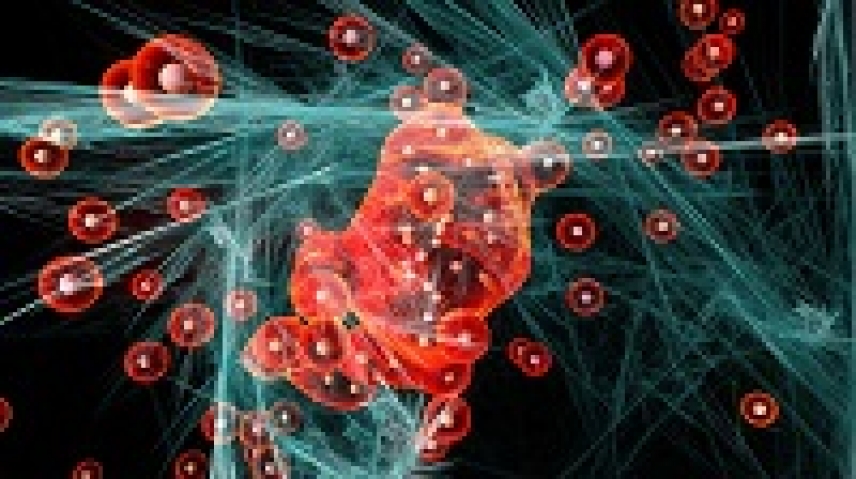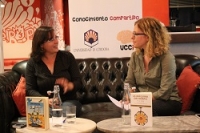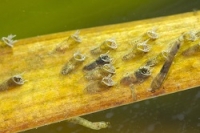Las investigadoras de la UCO reflexionan sobre el Día Internacional de la Mujer y la Niña en la Ciencia
Escrito por UCC+iLa Unidad de Cultura Científica y de la Innovación presenta el programa de actividades previsto en torno al 11 de febrero
Visibilizar el trabajo de las investigadoras y ofrecer referencias a las niñas. Ésos son los dos objetivos del programa de actividades preparado por la Unidad de Cultura Científica y de la Innovación de la Universidad de Córdoba en torno al Día Internacional de la Mujer y la Niña en la Ciencia, que se celebrará a nivel internacional el próximo 11 de febrero.
Desarrollan un nuevo material para manipular moléculas
Escrito por UCC+iUn científico de la Universidad de Córdoba, en colaboración con investigadores internacionales, crea un nuevo material monocristalino y poroso que podría tener múltiples aplicaciones en el campo de la nanotecnología y la catálisis.
Los materiales porosos son aquellos que poseen en su interior espacios intermoleculares o, en otras palabras, cavidades entre los átomos. Estas cavidades, denominadas poros, pueden almacenar moléculas en su interior e incluso separarlas, por lo que su utilidad en el campo de la nanotecnología es indispensable. A pesar de que sus aplicaciones industriales son incuestionables, aún queda espacio para la incorporación de mejoras que perfeccionen sus propiedades.
Investigadores del IMIBIC, Reina Sofía y UCO lideran una guía internacional sobre recomendaciones de estilo de vida para prevenir y tratar el síndrome metabólico
Escrito por IMIBIC
El documento, elaborado en colaboración con la UniversityCollege London y el IDIBAPS, incide en la trascendencia de los hábitos en la prevención y tratamiento de esta patología, así como en sus consecuencias
Investigadores del Instituto Maimónides de Investigación Biomédica de Córdoba (IMIBIC), el Hospital Universitario Reina Sofía, la Universidad de Córdoba (UCO), la UniversityCollege London, y el Instituto de Investigaciones Biomédicas August Pi i Sunyer (IDIBAPS) de Barcelona, lideran una guía internacional sobre recomendaciones de estilo de vida para la prevención y tratamiento del síndrome metabólico. El documento incide en la trascendencia del estilo de vida en la prevención y tratamiento de dicha patología y en sus consecuencias, con el fin de que los profesionales sanitarios tengan una guía para actuar sobre bases científicas.
Regresa ‘Cienciaficcionados’ con ‘El peso del corazón’ de Rosa Montero
Escrito por UCC+iEl ciclo de tertulias, que pretende divulgar conceptos científicos a través de obras literarias de ciencia ficción, comienza el próximo 17 de enero en El Astronauta
Los amantes de la ciencia ficción y todas las personas interesadas en la ciencia vuelven a tener otra serie de citas con este género literario a partir de la próxima semana. La VI edición de ‘Cienciaficcionados’, un ciclo de tertulias que pretende divulgar la ciencia a través de obras literarias, regresa el próximo miércoles 17 de enero con ‘El Peso del Corazón’, un libro de la escritora madrileña Rosa Montero que servirá como hilo conductor para la presentación de los conceptos científicos más importantes incluidos en él.
La Facultad de Filosofía y Letras acoge un Congreso Internacional sobre el Sujeto Literario en la modernidad temprana
Escrito por UCC+iEl encuentro, que se celebrará del 24 al 26 de enero, se centra en el periodo comprendido entre mediados del siglo XV y las primeras décadas del XIX en el ámbito hispánico
La facultad de Filosofía y Letras acogerá del 24 al 26 de enero un congreso de talla internacional sobre el Sujeto Literario en la modernidad temprana. De esta forma, el encuentro se centrará en el periodo comprendido entre mediados del siglo XV y las primeras décadas del XIX en el ámbito hispánico, aunque también serán tratadas otras perspectivas de dimensión europea. Aunque el núcleo de interés será la literatura en un sentido amplio, también tendrán cabida otras aproximaciones en otras artes o manifestaciones culturales e históricas.
Un documental muestra las fases de desarrollo del proyecto de seguimiento y control de mosca negra en Córdoba
Escrito por UCC+iUn documental realizado por investigadores de la Universidad de Córdoba muestra las distintas fases de desarrollo del proyecto de seguimiento y control de la mosca negra en el municipio cordobés, un insecto hematófago de gran importancia médica, veterinaria y económica debido a su potencialidad como vector de algunas enfermedades infecciosas.






